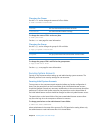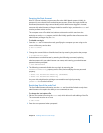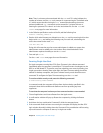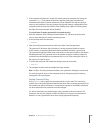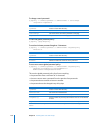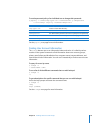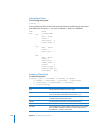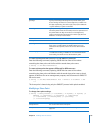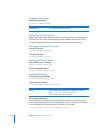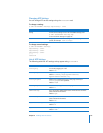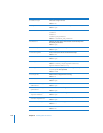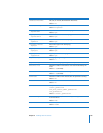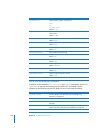
134 Chapter 9 Working with File Services
Listing Share Points
To list existing share points:
$ sharing -l
In the resulting list, there’s a section of properties similar to the following for each share
point defined on the server (1 = yes, true, or enabled; 0 = false, no, or disabled).
name: Share1
path: /Volumes/100GB
afp: {
name: Share1
shared: 1
guest access: 0
inherit perms: 0
}
ftp: {
name: Share1
shared: 1
guest access: 1
}
smb: {
name: Share1
shared: 1
guest access: 1
inherit perms: 0
oplocks: 0
strict locking: 0
directory mask: 493
create mask: 420 }
Creating a Share Point
To create a share point:
$ sharing -a
path
[-n
customname
] [-A
afpname
] [-F
ftpname
]
[-S
smbname
] [-s
shareflags
] [-g
guestflags
] [-i
inheritflags
]
[-c
creationmask
] [-d
directorymask
] [-o
oplockflag
]
[-t
strictlockingflag
]
Parameter Description
path The full path to the folder you want to share.
customname The name of the share point. If you don’t specify this custom name,
it’s set to the name of the folder, the last name in
path
.
afpname The share point name shown to and used by AFP clients. This name
is separate from the share point name.
ftpname The share point name shown to and used by FTP clients.
smbname The share point name shown to and used by SMB/CIFS clients.
shareflags A three-digit binary number indicating which protocols are used to
share the folder. The digits represent, from left to right, AFP, FTP,
and SMB/CIFS.
1=shared, 0=not shared.



